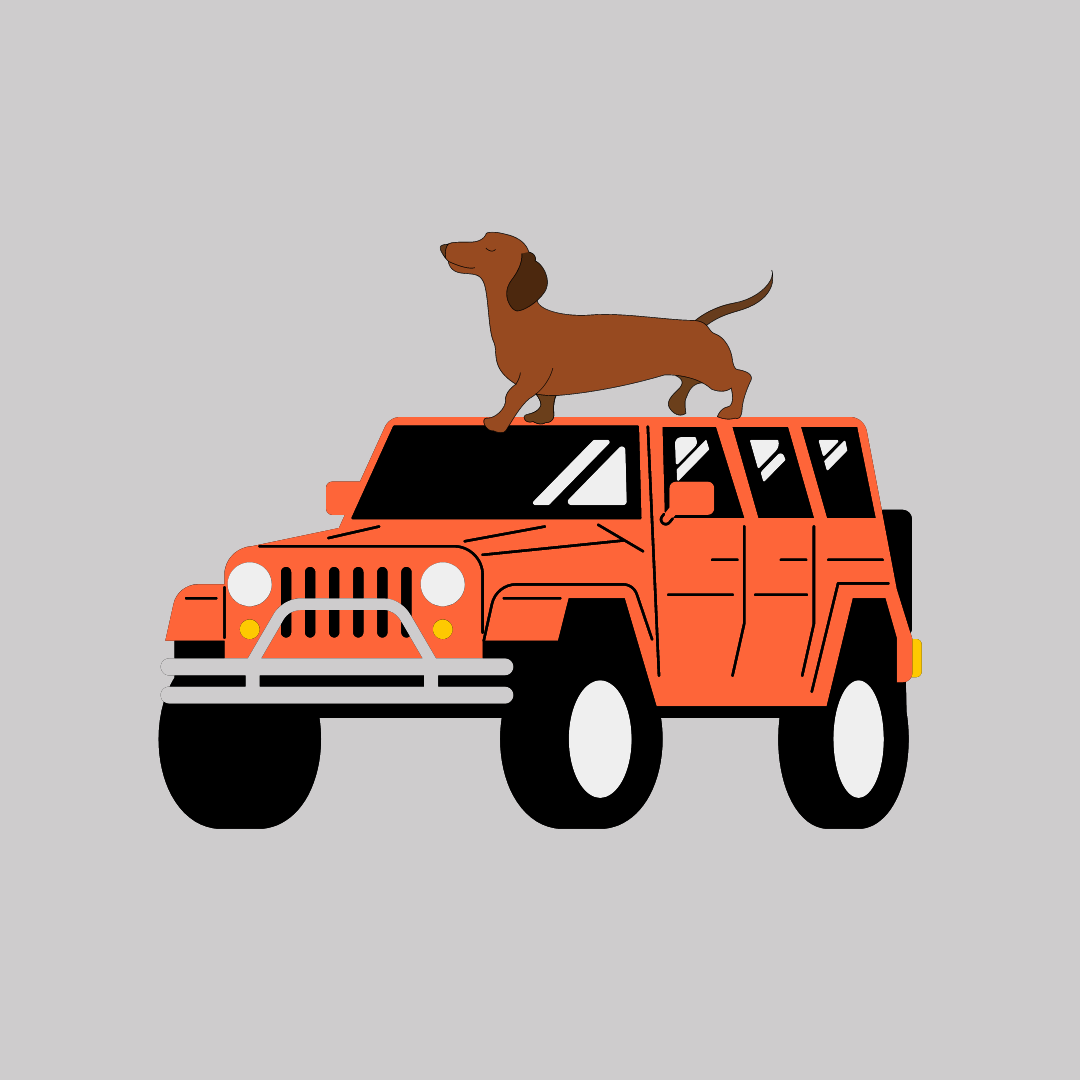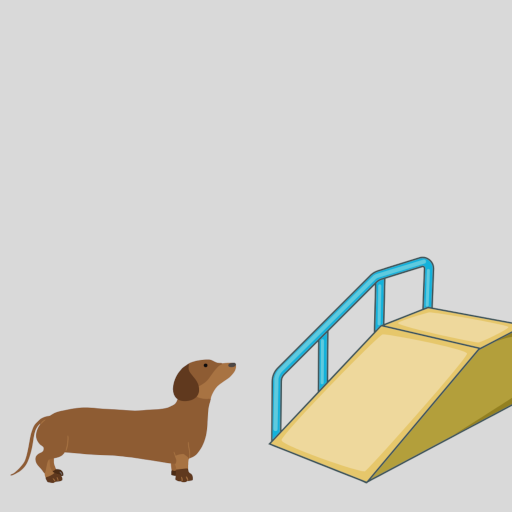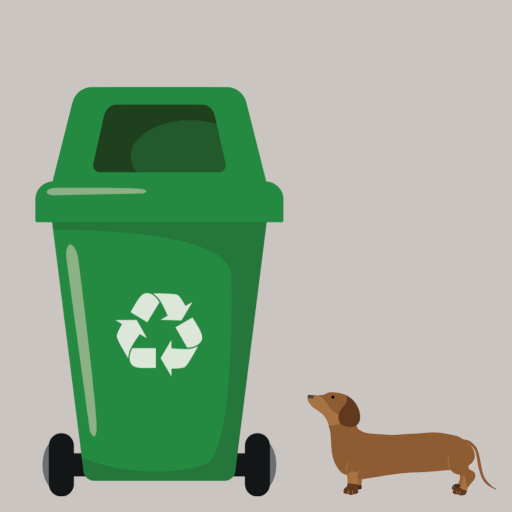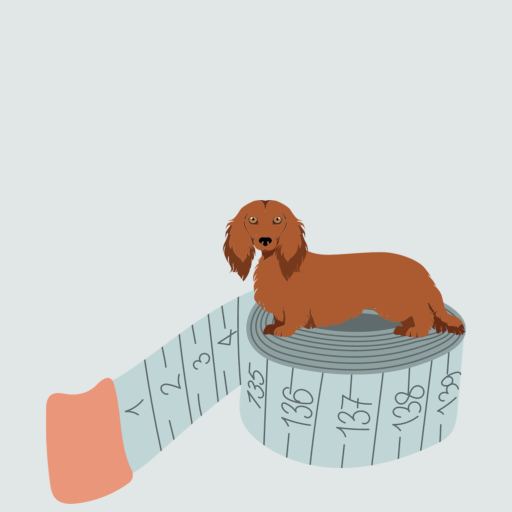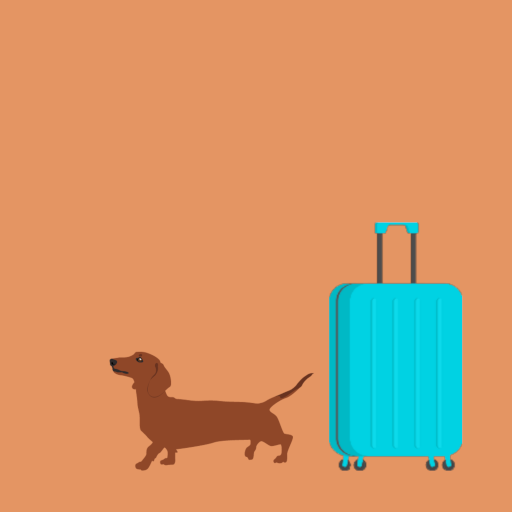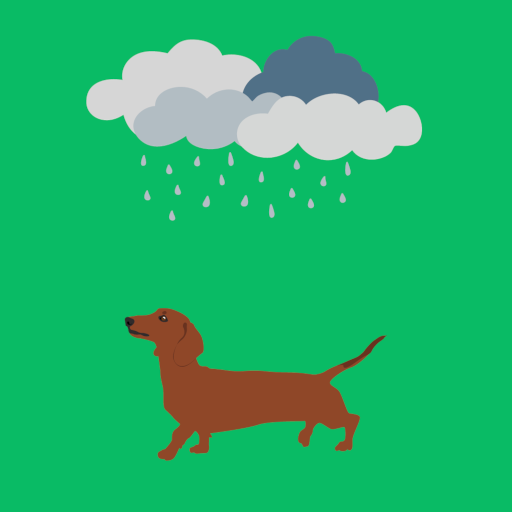Long dog, long journey: road trips with your dachshund
Long dog, long journey: road trips with your dachshund
Secure your dog to prevent distraction and accidents
It’s never safe to let a dog roam around a car unrestrained. Keeping a dog still and under control while you’re driving will help you to focus on driving instead of on the dog. Unrestrained dogs can distract you, and may be injured if you stop suddenly or are in an accident.
Consider putting your dachshund in a crate or cage, or a dog booster seat, if you are driving a long distance or if your dog is nervous in cars. The container should be attached to the car. Your dachshund should also be attached to the car using a correctly sized canine travel harness (not their collar) and a specialist tether or a lead. Your dog should travel on the back seat, not the front seat, and her harness should be secured to the seat belt attachment.
Whatever you use to contain your dachshund in the car, it should allow them to lie down comfortably in a natural position, stand and sit erect, turn around, and stretch with some clearance.
This is all sensible stuff. And now in the UK, traveling with an unrestrained animal in your car in the UK could see you fined up to £2,500, and get nine points on your license.
Get your dog used to being in a car before a long car journey
Don’t wait until the morning of your big trip. Allow your dog to become familiar with car journeys by ensuring they have positive experiences over a number of short trips before embarking on a long journey.
The Dog’s Trust recommends that you train your dog to wait calmly before being asked to jump out of the car in a controlled manner. It may be dangerous if your dog jumps out into a road with traffic before you have put their lead on. Remember to keep the lead in an obvious place! Don’t bury it somewhere under your luggage.
Keep your dog's collar on whenever you are driving long distance, and make sure she is microchipped and your current phone number is on her collar tag. There's always a chance, no matter how well-behaved your doxie may be, that she will get out of the car and run away from you. Make sure that your dog can be identified if it escapes from you while traveling.
Comfort zone
Make sure your dog has plenty of space in the car and isn’t squashed or forced to sit in direct sunlight. Always make sure there is shade provided, even in an air conditioned car a dog can become too hot if in full sun.
Heat kills. Welfare organisations like the Dogs Trust unanimously advise that you never, ever leave your dog in your car if it’s warm outside. Take them out of the car and leave them in a secure, cool place with access to shade and water. The temperature inside your car can rise to uncomfortable levels in seconds and lethal levels in minutes: on a warm summer day, with an ambient temperature of 25°C, the interior temperature of your car can easily reach 70°C.
It’s a classic image: the happy dog in a car or truck hanging his head out of the window. But it’s a very bad idea to encourage your dog do this. Air-borne debris, even small seeds or stones, can cause serious damage to eyes at high speed. Either open the window just an inch or two, or use a window guard to provide a safe breeze for your dog to enjoy.
Breaks from driving are good for both driver and dog
Take breaks regularly during your journey. Make sure that you stop every hour or so and go for a quick walk on the lead, even if it's only on the grass at a service station. Your dog can take some water on board and go to the toilet. Allowing your dog to stretch their legs helps to prevent her from getting bored. Humans need a break too during long car journeys. Drivers are generally recommended to stop and take a break every two hours, so regular stops are good for everyone! Plan your journey time and route so you can stop at regular intervals.
Check that your breakdown service will allow your dog to travel in the cab with you if your vehicle needs to be towed. In the UK, both the AA and The RAC advise customers to say they have dogs with them when they report a breakdown. Whether a dog will be allowed in the cab will be at the discretion of the patrolman.
Feeding and watering … and toileting
It is recommended that you avoid feeding your dog right before your trip. Feed him or her at least a few hours before. This can help your dachshund avoid getting carsick.
Take enough of your regular dog food to use at your destination. You may not be able to find the usual food if you don’t take it with you. Don't forget a can opener if your dog eats tinned food.
Take plenty of water for the journey, in case you can't find a tap.
Health and medication
If your dachshund is unwell, or under the weather, consider whether a long journey is in their best interests. Your dog should be in good health before a big car trip.
If you’re going on a long trip or will be away from home for several weeks, make sure your dachshund is up to date with worming, vaccinations, and flea treatments as well as any locally recommended prophylactics. Take monthly supplies of these with you as appropriate.
Long car journey checklist
Correctly sized canine travel harness and attachment lead.
Crate or correctly sized dog carrier or booster seat.
Seat cover for the car
Plenty of water, regular food, and favourite treats
Bedding and bed or crate to sleep in
Poo bags and clean up kit (cloths, enzyme spray, carpet cleaner)
Grooming equipment & dog towel
Collar & lead
Toys
Any required medications to last the duration of the trip, & a dog first aid kit
Pet insurance policy details
Copies of vaccination certificates
Pet Passport for travel from the UK to the EU
Find nearest recommended veterinarian at your destination
Happy travels!

